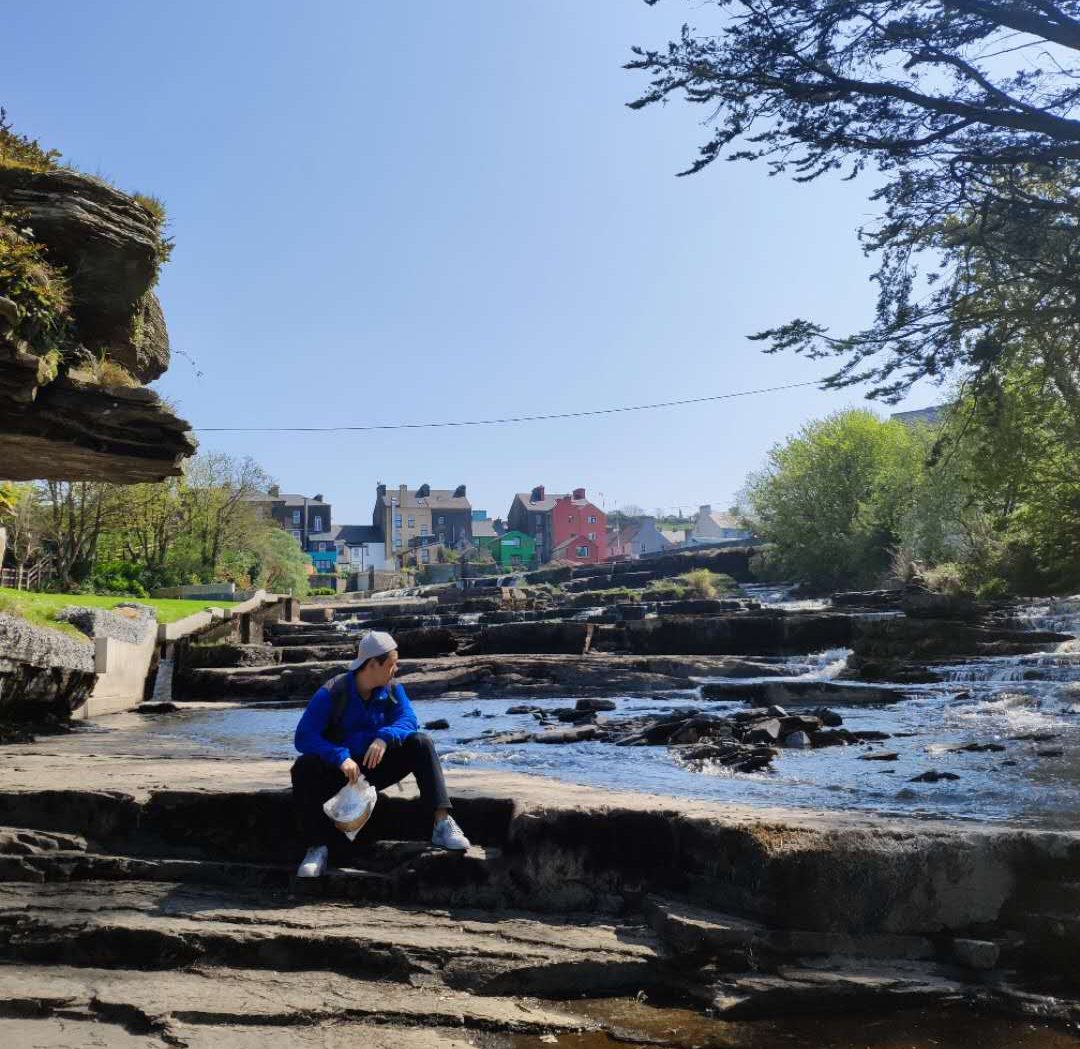Beveridge, M. C. M., Phillips, M. J., & Macintosh, D. J. (1997). Aquaculture and the environment: the supply of and demand for environmental goods and services by Asian aquaculture and the implications for sustainability. Aquaculture research, 28(10), 797-807.
Cao, L., Diana, J. S., Keoleian, G. A., & Lai, Q. (2011). Life cycle assessment of Chinese shrimp farming systems targeted for export and domestic sales. Environmental Science & Technology, 45(15), 6531-6538.
Cao, L., Naylor, R., Henriksson, P., Leadbitter, D., Metian, M., Troell, M., & Zhang, W. (2015). China’s aquaculture and the world’s wild fisheries. Science, 347(6218), 133-135.
Cao, L., Wang, W., Yang, Y., Yang, C., Yuan, Z., Xiong, S., & Diana, J. (2007). Environmental impact of aquaculture and countermeasures to aquaculture pollution in China. Environmental Science and Pollution Research-International, 14(7), 452-462.
Carlson, R. E. (1977). A trophic state index for lakes 1. Limnology and oceanography, 22(2), 361-369.
China Agriculture Press (2018) China Fishery Statistical Yearbook (China Agriculture Press, Beijing). Chinese.
Eng, C. T., Paw, J. N., & Guarin, F. Y. (1989). The environmental impact of aquaculture and the effects of pollution on coastal aquaculture development in Southeast Asia. Marine pollution bulletin, 20(7), 335-343.
FAO (2018),The State of World Fisheries and Aquaculture 2018.
Ghosh, C., Frijns, J., & Lettinga, G. (1999). Performance of silver carp (Hypophthalmicthys molitrix) dominated integrated post treatment system for purification of municipal waste water in a temperate climate. Bioresource technology, 69(3), 255-262.
Goetzl, E. J., & Pickett, W. C. (1980). The human PMN leukocyte chemotactic activity of complex hydroxy-eicosatetraenoic acids (HETEs). The Journal of Immunology, 125(4), 1789-1791.
Grigorakis, K., & Rigos, G. (2011). Aquaculture effects on environmental and public welfare–the case of Mediterranean mariculture. Chemosphere, 85(6), 899-919.
Guinée, J. B. (2002). Handbook on life cycle assessment operational guide to the ISO standards. The international journal of life cycle assessment, 7(5), 311-313.
Henriksson, P. J. G., Guinée, J. B., Kleijn, R., & de Snoo, G. R. (2012). Life cycle assessment of aquaculture systems—a review of methodologies. The International Journal of Life Cycle Assessment, 17(3), 304-313.
Hien, T. T. T., Trung, N. H. D., Tâm, B. M., Chau, V. M. Q., Huy, N. H., Lee, C. M., & Bengtson, D. A. (2016). Replacement of freshwater small-size fish by formulated feed in snakehead (Channa striata) aquaculture: Experimental and commercial-scale pond trials, with economic analysis. Aquaculture Reports, 4, 42-47.
Li, X., Li, J., Wang, Y., Fu, L., Fu, Y., Li, B., & Jiao, B. (2011). Aquaculture industry in China: current state, challenges, and outlook. Reviews in Fisheries Science, 19(3), 187-200.
Newton, R. W., & Little, D. C. (2018). Mapping the impacts of farmed Scottish salmon from a life cycle perspective. The International Journal of Life Cycle Assessment, 23(5), 1018-1029.
Nilsson, P., & Ziegler, F. (2007). Spatial distribution of fishing effort in relation to seafloor habitats in the Kattegat, a GIS analysis. Aquatic Conservation: Marine and Freshwater Ecosystems, 17(4), 421-440.
Papatryphon, E., Petit, J., Kaushik, S. J., & van der Werf, H. M. G. (2004). Environmental impact assessment of salmonid feeds using life cycle assessment (LCA). AMBIO: A Journal of the Human Environment, 33(6), 316-324.
Shils, M. E., & Shike, M. (2006). Modern nutrition in health and disease: Lippincott Williams & Wilkins.
Steffens, W. (1997). Effects of variation in essential fatty acids in fish feeds on nutritive value of freshwater fish for humans. Aquaculture, 151(1-4), 97-119.
Tacon, A. G. J., & Metian, M. (2009). Fishing for aquaculture: non-food use of small pelagic forage fish – a global perspective. Reviews in Fisheries Science, 17(3), 305-317.
Tacon, A. G. J., & Metian, M. (2015). Feed Matters: Satisfying the Feed Demand of Aquaculture. Reviews in Fisheries Science, 23(1), 1-10.
Venugopal, V., & Shahidi, F. (1996). Structure and composition of fish muscle. Food Reviews International, 12(2), 175-197.
Wimalasena, S., & Jayasuriya, M. N. S. (1996). Nutrient analysis of some fresh water fish. Journal of the National Science Foundation of Sri Lanka, 24(1).
刘兰, 刘英惠, & 杨月欣. (2010). WHO/FAO 新观点: 总脂肪 & 脂肪酸膳食推荐摄入量. 中国卫生标准管理, 1(3), 67-71.
原居林, 郭建林, 刘梅, & 顾志敏. (2017). 不同饲料类型和放养密度对乌鳢生长特性及营养品质的影响. 大连海洋大学学报, 32(5), 534-543.
孟宪菊, 李华, 朱站英, 李立军, & 吴文秀. (2016). 三种不同饲料投喂乌鳢的效果对比分析. 科学养鱼(6), 70-71.
岳冬冬, 王鲁民, 方辉, 樊伟, 黄洪亮, 熊敏思, . . . 陆亚男. (2015). 我国近海捕捞渔业发展现状、问题与对策研究. 渔业信息与战略, 30(4), 239-245.
庄平, 宋超, 章龙珍, 刘健, & 罗刚. (2009). 转食不同饵料对野生中华鲟幼鱼肌肉营养成分的影响. 水生生物学报, 33(5), 998-1004.
庞涛, & 张骞予. (2018). 麦康森直言石斑鱼料将全面取代冰鲜,粤海旗下6万吨生产线欲投产,紧抓石斑鱼料大风口. 当代水产, v.43;No.400(4), 64-65.
李云梦, 郑侠飞, & 王岩. (2018). 浙江省池塘养殖大口黑鲈和乌鳢的生长性能和养殖环境分析. 水产科技情报, 45(1), 11-17.
李志斐, 龚望宝, 王金林, 王广军, 余德光, & 谢骏. (2017). 冰鲜杂鱼和人工配合饲料对大口黑鲈肌肉品质及健康状况影响的评价. 动物营养学报, 29(11), 4180-4188.
李静. (2016). 基于 LCA 的水产养殖环境影响评价.
王广军, 吴锐全, 谢骏, 余德光, 谢一荣, & 王海英. (2009). 投喂冰鲜下杂鱼和配合饲料对大口黑鲈养殖水质的影响. 黑龙江水产(2), 5-9.
王明翠, 刘雪芹, & 张建辉. (2002). 湖泊富营养化评价方法及分级标准. 中国环境监测, 18(5), 47-49.
王杰, 张延青, 孙国祥, 李甍, & 刘鹰. (2014). 基于生命周期评价 (LCA) 的 2 种大菱鲆养殖模式对环境影响对比研究. 安徽农业科学, 42(14), 4380-4383.
王鹤扬. (2012). 综合营养状态指数法在陶然亭湖富营养化评价中的应用. 环境科学与管理, 37(9), 188-194.
祖岫杰, & 徐彦山. (1997). 用颗粒饲料驯化乌鳢的初步研究. 渔业现代化(1), 11-12.
罗文华, & 王景春. (2000). 北方池塘肉食性鱼类的驯化养殖技术. 现代化农业(7), 22-22.
诸葛燕. (2018). 大口黑鲈颗粒饲料与冰鲜鱼饲养对比试验. 水产养殖(4), 46-49.
陈飞东, & 杨立锋. (2013). 乌鳢营养价值及其深加工开发前景. 农产品加工(学刊)(8), 51-53.
